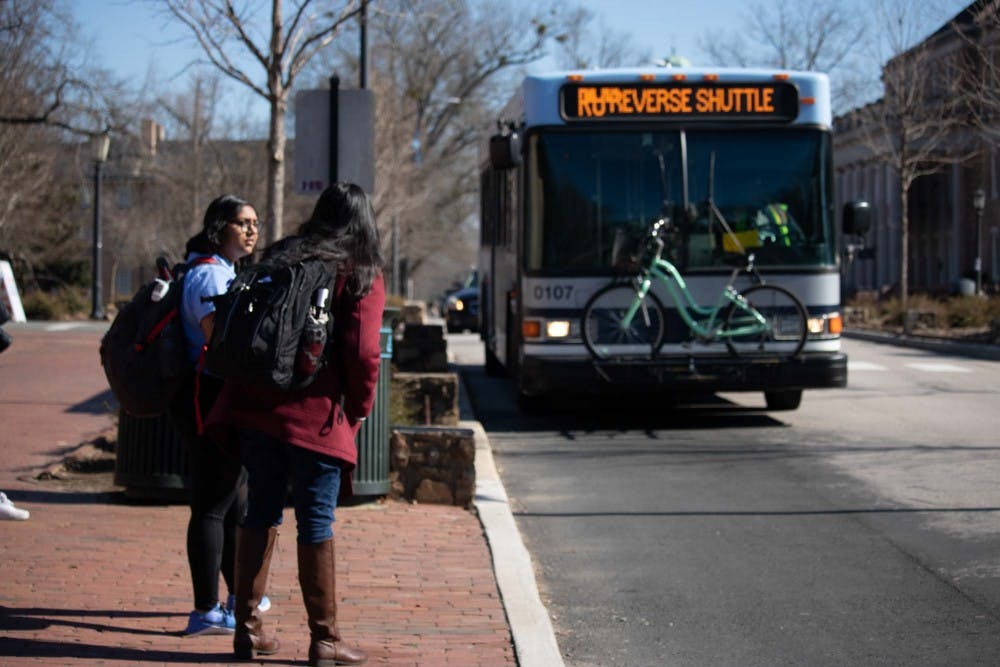These resources will hopefully give the BRT project a unique design.
“Once it makes a right back onto South Columbia, it is currently slated to be a dedicated converted bus lane,” Cecil said. “So, we’re actually going to convert an existing traffic line to a bus lane, and it will carry that converted lane all the way to downtown.”
The buses on this route would no longer be a part of regular car traffic, hopefully reducing potential "community frustration," Cecil said.
According to the N-S BRT Fact Sheet, the project also uses a traffic signal priority system, which enables longer green lights for approaching BRT vehicles.
“N-S BRT is very much a first step in creating a better transit system in Chapel Hill,” he said. “Making a better transportation system will make it more attractive for future development and help recruit more people to come and take residence.”
"Make room for everybody"
Jason Merrill, chairperson of the Town’s Transportation and Connectivity Advisory Board, said the Town wants to create a network that gives people a variety of choices besides cars when planning future transportation. Merrill said the BRT project will be a step toward a complete transit model that will have features like improved bike and pedestrian access and greenways.
“The hope and the expectation are that if we create more opportunities for people to pick other methods, then hopefully we’ll have fewer cars on the street,” he said. “And that will reduce congestion for car drivers.”
He added that when looking at transit planning, congestion isn't the only metric that should be considered.
“There isn’t just one way for everyone to do everything,” he said. “So the responsibility of the government is to create public spaces, our streets, that make room for everybody, and then make it safe for people to choose.”
Ongoing discussions
PLAN 590: Roadways for a Safer Future, a special topics course of UNC’s City and Regional Planning Department, offers a chance for students to look at roadway infrastructure through local transit.
To get the day's news and headlines in your inbox each morning, sign up for our email newsletters.
It aims to foster discussion and understanding across disciplines about critical transportation components such as land use, and this semester’s material includes the BRT project.
Tabitha Combs, the course instructor, said younger generations like college students are leading a new transportation trend with less driving and more walking, biking and transit.
“The younger perspective says, ‘No, that’s not what we want, don’t force what worked for previous generations on us because we’re shifting this paradigm,'" she said.
Combs said this discussion is important for understanding local transportation needs.
“It’s not just that you deserve a voice, but you have a demand placed on the system of the community,” she said. “It’s important that we understand what you are doing and what can we do to make this better for you, so just understanding the need and thought processes of this very big demographic is really important from an overall town planning perspective.”
@crystalyu_
city@dailytarheel.com



